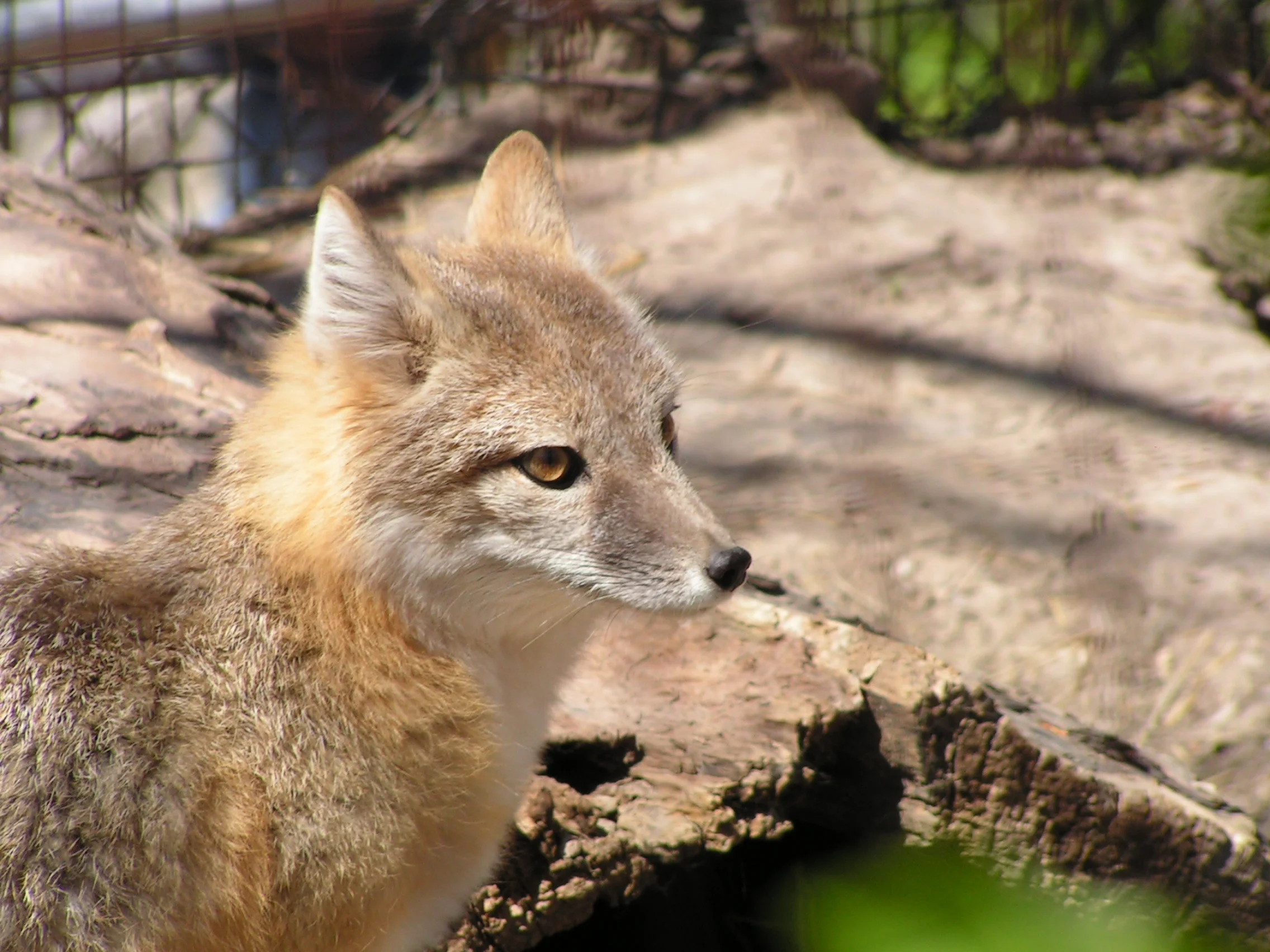Swift Fox
"Caution, Coyote" by Shannon Beaumont (ink and digital)
“I can’t resist foxes. These foxes are tiny and are, well, swift on their feet (hence their name). But unlike many species of foxes, they are very environment dependent. Plus, because of their small size, they are very vulnerable to coyotes, though of course humans have played a large role in reducing their numbers as well. They are less suspicious by nature and thus more susceptible to poisoning, traffic and traps than other fox species. While there are breeding programs to try and sustain and re-introduce their numbers, because they primarily live in burrows, protecting their habitat remains vital to their survival as a species. ”
Your purchase is helping Expedition Art and Saving Species purchase land in Sumatra! Learn more about the project.
Habitat
Swift foxes are native to North America, with a historical range that extended across the Great Plains region north to Canada and into central Texas. Their preferred habitat is rolling hills with short grasses and open prairie land with limited numbers of shrubs. Even though the population of swift foxes has become stable, their populations are still fragmented and their range has been reduced to pockets of Montana, South Dakota, Wyoming, Nebraska, Colorado, Kansas, Oklahoma, New Mexico and Texas.
Family Life
They are largely nocturnal, with the majority of their days spent burrowed in their dens. Swift foxes are social creatures whose interactions with one another vary seasonally. While they have been known to partner and mate for life, they do not always choose the same partner to mate with each year. They breed every year and produce a litter of up to six pups. Both parents participate in protecting their young offspring.
Lifespan
Little is known about how long swift foxes live in the wild. The oldest known wild fox has been 9 years old. In captivity they have been known to live until the age of 14.
Hunting Habits/Diet
Swift foxes are omnivores, eating whatever is most available seasonally. They eat a variety of prairie animals, including rabbits, prairie dogs, squirrels and mice. Berries and seeds are a part of their diet when available, as are birds and reptiles.
Population
Swift fox population numbers in the wild are unknown. Estimates state that the swift fox has been wiped out of 50-90% of their historic range in the U.S. There may be about 300 swift foxes in Canada.
Fun Facts
The exact population of swift foxes in the wild is unknown. Estimates state that while the swift fox has been wiped out of the majority of their historic range in the U.S., the population trend is stable. While their total population is unknown, there are between 300 and 700 swift foxes in Canada. The Canadian government has pursued active reintroduction measures to help save the species.
Why Are They Endangered?
As the swift fox is very specific to its habitat, the main concern facing its survival is habitat loss and degradation due to agricultural development. Humans also poison, shoot and trap wild swift foxes and their prey. Climate change poses a very real threat to the viability of the swift fox’s habitat.
Status
Least Concern


